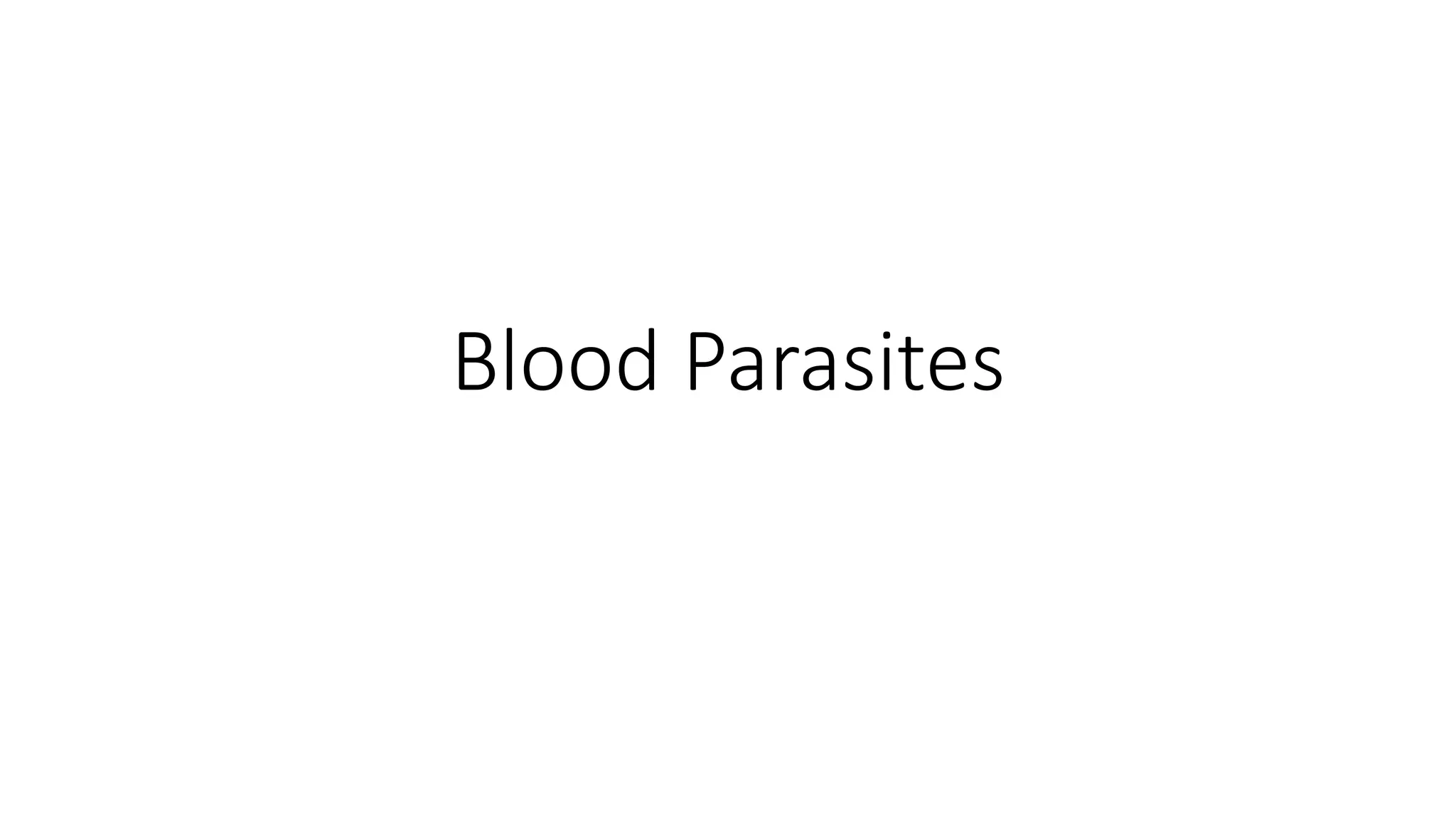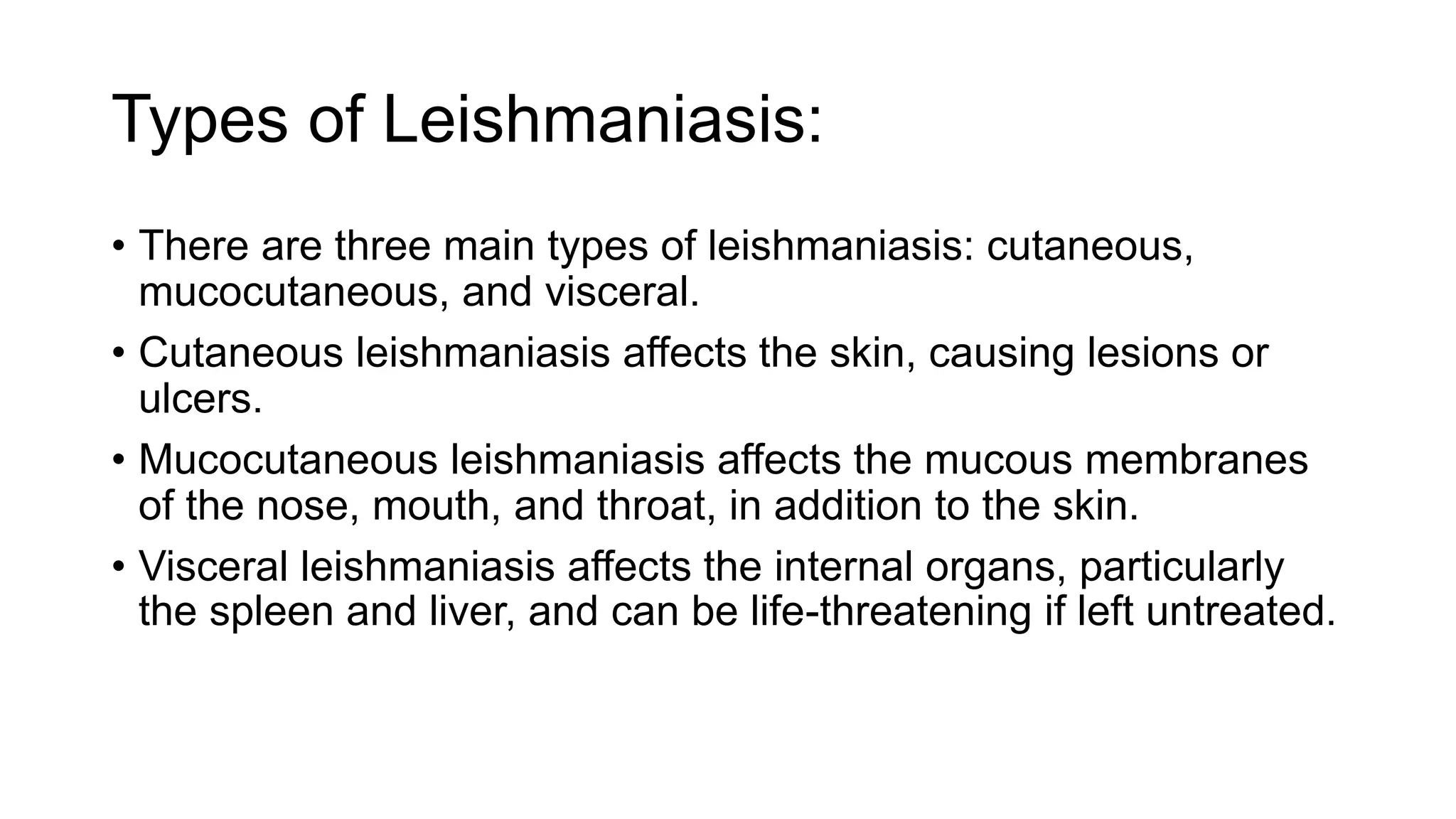Blood parasites are microorganisms that infect blood cells. Common types include Plasmodium, which causes malaria, and Trypanosomes, which cause sleeping sickness. Plasmodium is transmitted between humans by mosquitoes and infects liver and blood cells, causing fever and anemia. Trypanosomes are transmitted by tsetse flies and infect the central nervous system, leading to fever, headache, and confusion. Both diseases are diagnosed through blood tests and treated with antimalarial or antiparasitic drugs.


































